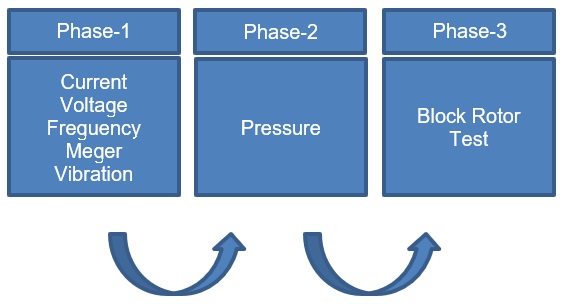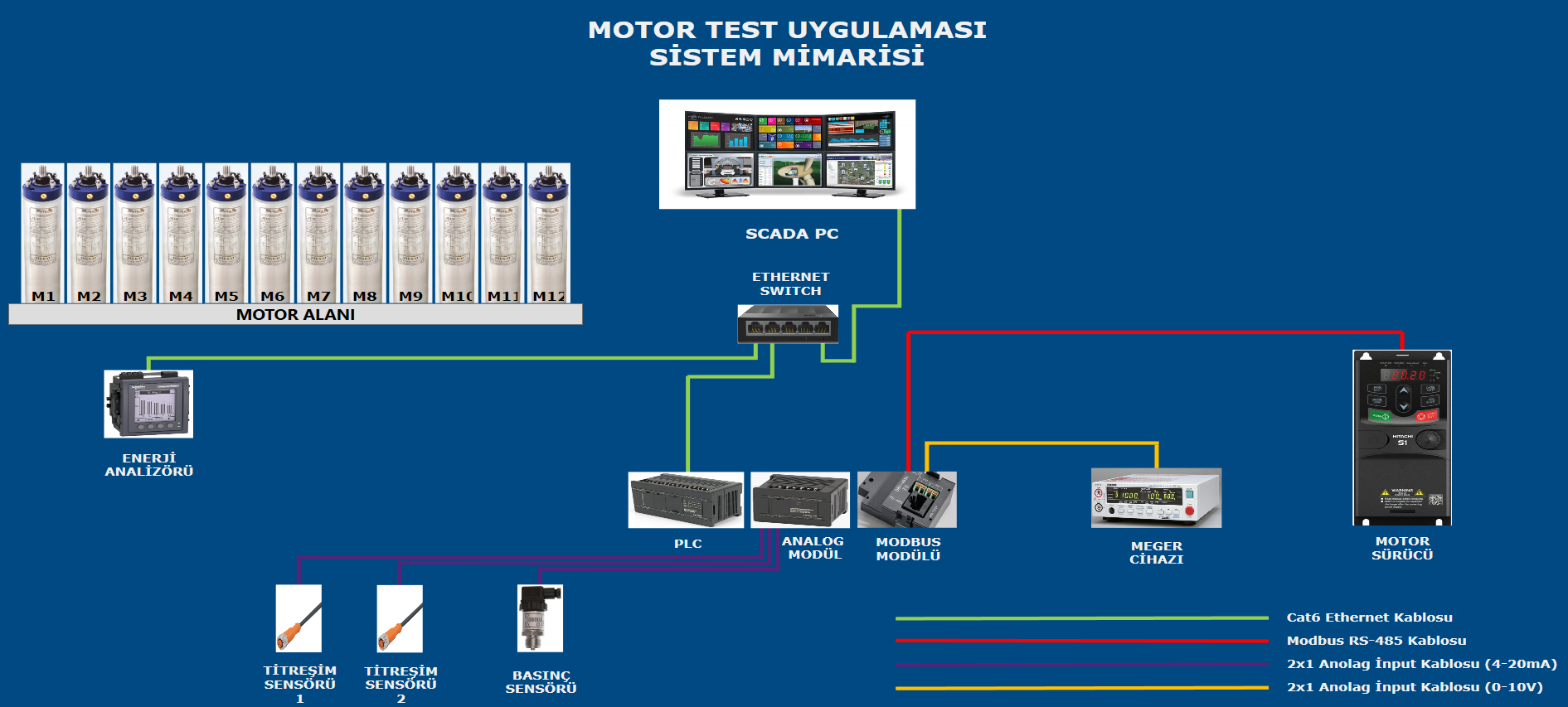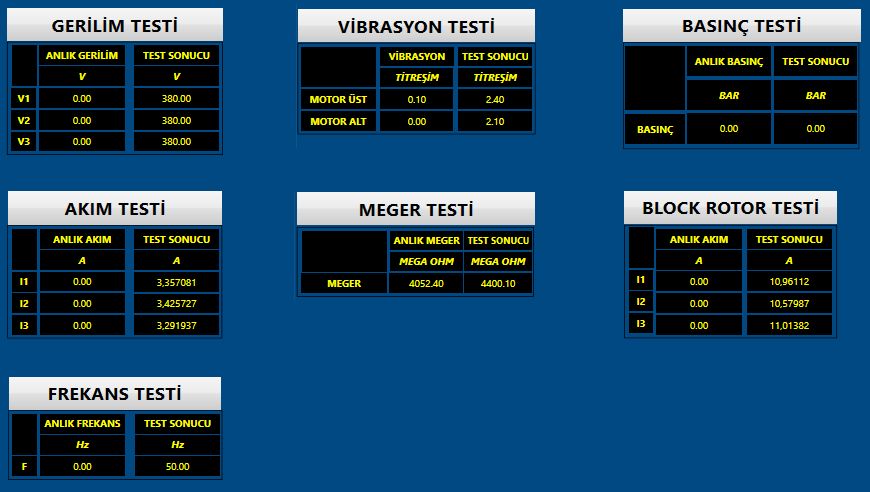The motor, whose production process is completed, needs to pass some tests before it reaches the end user. It is possible to collect the tests to be done under 3 Phases.

Phase-1 :
After starting the motor; current, voltage, frequency and vibration values are read. If the readings meet the specified standard values, the motor has passed these tests successfully. These tests are done while the motor is running.
Meger measurement should be made after the motor has stopped. If the value read is within the set value range, the motor has passed the meger test.
Phase-2 :
The motor, whose current, voltage, frequency, vibration and meger test processes are completed, enters the pressure (leakage) test. The motor must be de-energized for the pressure test. For pressure testing, water or air is supplied to the motor through a valve. When the pressure in the motor reaches the set level, the flow is cut off with the help of the valve. There should be no drop in water or air pressure during the specified time. If there is no decrease in pressure value, the motor has passed the pressure test.
Phase-3 :
The motor, which passes the tests in the first two stages, is taken to the block rotor test. The purpose of the block rotor test is to observe the change in current values by applying low voltage to the motor. For the block rotor test, the motor rotor is locked with a mechanical part. A voltage lower than the nameplate value is applied to the motor. If the variation between the measured current values is at an acceptable level, the motor has passed the block rotor test.
Motor test SCADA Architecture can be expressed as follows;

All values read can be monitored with a SCADA software. Following up with a visual like the one below will provide a controlled and useful test follow-up. Thus, all data will be seen on a single screen, tracking and intervention will be possible.

Moving the data to the report environment will also be important in terms of making historical-based analyzes.
For similar needs, you can reach us from our phone numbers or our website www.cedetas.com.tr.
![]()

